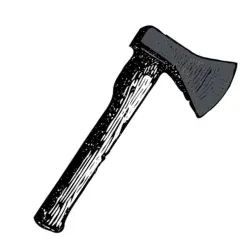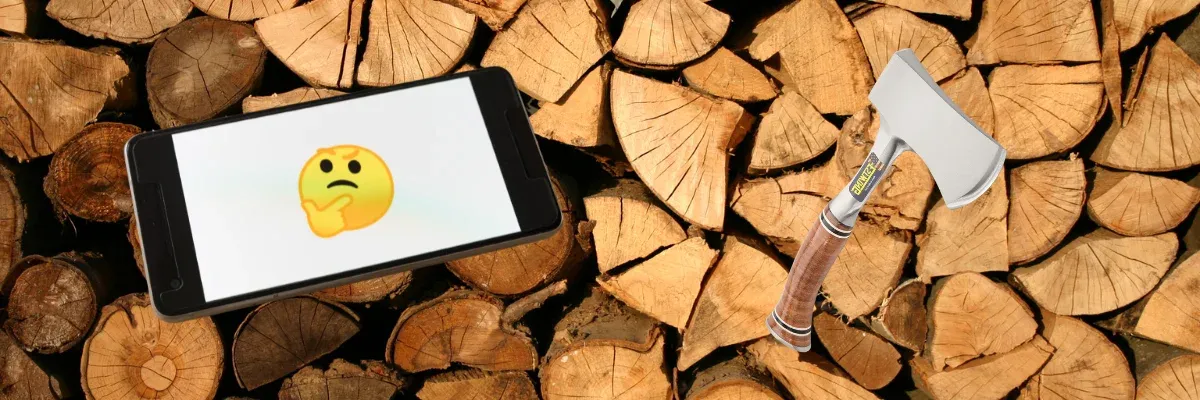When preparing for a camping trip or a bushcraft adventure, choosing the right tool for wood management is crucial. Many outdoor enthusiasts often find themselves pondering over whether to pack a camp axe or a hatchet. Both tools are essential for different purposes, but understanding their distinct features can significantly enhance your outdoor experience.
Key Takeaways:
- Distinct Functions: Hatchets are ideal for lighter tasks such as chopping kindling, while camp axes are better suited for heavier tasks like splitting large pieces of firewood.
- Design Differences: Hatchets generally have a shorter handle and lighter head, making them easy to wield with one hand. Camp axes feature a longer handle and heavier head for increased leverage and power.
- Portability and Use: Hatchets, with their compact size, are more portable and often come with a belt loop on their sheath for easy carry. Camp axes, being larger, are less portable but offer greater efficiency in handling larger tasks.

Understanding the Basics: Hatchet vs. Camp Axe
A hatchet is essentially a small, lightweight axe designed for one-handed use. Its primary function is to tackle lighter tasks such as making kindling, small chopping jobs, or even some detail tasks like carving. The typical hatchet has a shorter handle and a lighter head, which makes it not only easy to swing but also simple to carry, often featuring a belt loop on its plastic sheath for attachment to a backpack or belt.
In contrast, a camp axe, sometimes referred to as a camping axe, is slightly larger and designed for more robust tasks. This tool is perfect for chopping firewood, felling small trees, or splitting logs. The camp axe usually features a longer handle and a heavier head, providing the necessary leverage and power needed for tougher jobs. The design of the handle, often made from durable materials like hickory or composite handles, ensures it can withstand the force of chopping larger pieces of wood.
Design and Ergonomics: Tailoring to Tasks
The design of the hatchet is tailored towards efficiency in smaller, quicker tasks. Hatchets often have a shorter handle, typically made from materials like hickory or composites, which provides a good grip and control. The lighter head of the hatchet makes it less tiring to use over extended periods, especially when precision is needed.
Camp axes, with their longer handles and heavier heads, are engineered for power. The longer handle increases the swing speed, thereby enhancing the chopping power. This makes camp axes ideal for splitting larger pieces of wood, where more force is required. The handle design also plays a crucial role in absorbing shocks, reducing the strain on the user during repetitive swings.
Portability and Accessibility: On-the-Go Tools
For hikers and campers who need to minimize their load, the camping hatchet emerges as the go-to tool. Its compact size and lighter weight make it easy to attach to a backpack or hang from a belt loop, ensuring it’s always within reach when needed. This makes the hatchet an indispensable tool for camping trips where space and weight are at a premium.
Camp axes, while bulkier, are still valuable for certain types of camping trips, especially those involving car camping where transportability is less of an issue. The effectiveness of a camp axe in handling larger tasks can save significant time and effort when setting up camp or preparing firewood.
Material Matters: Handle and Head
The materials used in the construction of hatchets and camping axes play a pivotal role in their functionality and longevity. Most axes, including hatchets and camp axes, feature steel heads. However, the quality of steel can vary, affecting the tool's durability and the sharpness of the blade. Sharpening the blade regularly is crucial to maintain its efficiency, whether it's a lighter hatchet or a heavier camp axe.
Handles are another critical component. While hickory handles are popular due to their durability and shock absorption properties, composite handles are becoming more common due to their resistance to weather and wear. The choice of handle material can affect the overall weight and balance of the tool, which in turn influences its suitability for different tasks.
Choosing the Right Tool for Your Needs
Selecting between a hatchet and a camp axe largely depends on the nature of your outdoor activities. For those who engage in light bushcraft or need a tool for simple campsite tasks, a hatchet might be the perfect fit. Its ease of use, combined with the ability to perform detail tasks competently, makes it a great value tool.
For more intensive tasks like splitting firewood or felling trees, a camp axe is more appropriate. Its design allows for greater force and leverage, making challenging tasks more manageable. The longer handle and heavier head also mean that it can tackle larger logs and thicker branches with ease.

Summary
Understanding the difference between a camp axe and a hatchet is key to choosing the right tool for your outdoor adventures. While both serve the fundamental purpose of chopping wood, their design and intended use cater to different needs. A hatchet, with its compact size and lighter head, is ideal for lighter, one-handed tasks and offers great portability. A camp axe, with its longer handle and heavier head, is suited for more demanding tasks, providing the necessary power and leverage. Choosing the right tool not only enhances your efficiency but also adds to the enjoyment of your outdoor experience.

FAQs
Can I use a hatchet for splitting large logs?
While a hatchet can technically be used to split small logs, its lighter head and shorter handle are not ideal for splitting large logs efficiently. A camp axe would be more suitable for this task.
Is it necessary to sharpen my camp axe regularly?
Yes, maintaining the sharpness of your camp axe is crucial for ensuring it performs optimally. Regular sharpening keeps the blade effective and reduces the effort needed to chop or split wood.
Are composite handles better than wooden handles?
Composite handles offer great durability and resistance to weather, making them a good choice for harsh conditions. However, wooden handles, like those made from hickory, are favored for their natural shock absorption and traditional feel. The choice depends on personal preference and the specific requirements of your tasks.
Related articles:











